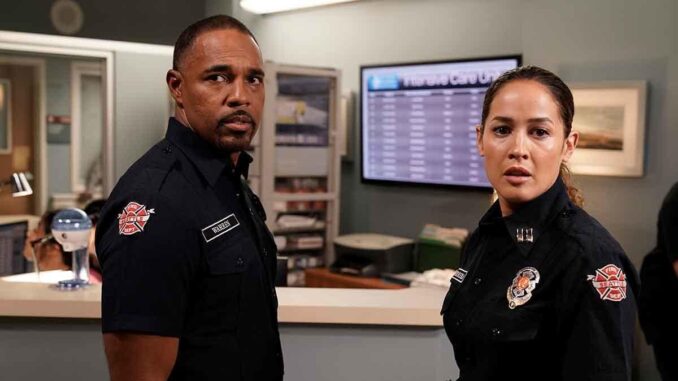
The Echo in the Halls: When an Echo Finds Its Way Home
A fleeting headline, a digital whisper, "Station 19 Actor May Be Returning to Grey's Anatomy md02." On the surface, it’s merely a news byte, a blip in the ceaseless churn of entertainment journalism. Yet, for the devoted, the long-term viewers whose lives have been soundtracked by the beeping of monitors and the passionate monologues in Seattle Grace (now Grey Sloan Memorial), this brief statement is more than news; it's a resonant chord, an invitation to a homecoming, a testament to the enduring, interwoven magic of television storytelling.
Imagine the news breaking like a gentle seismic shift through the fan community. A ripple becomes a wave, a digital whisper ignites a forum firestorm. Screenshots are meticulously analyzed, social media feeds pulse with question marks and exclamation points. It’s not just about a plot twist; it’s about a ghost in the machine, a beloved figure who once walked those hallowed hospital halls, now potentially stepping back through a door that many believed had permanently closed. This isn't just an actor; it's a character, a piece of shared history, returning to the narrative wellspring from which they originally sprang.
Grey's Anatomy and Station 19 exist as twin galaxies in the Shondaland firmament, their orbits intersecting, characters often crossing the cosmic bridge of a shared emergency or a family crisis. They are two distinct rivers, yet their waters mingle, carrying stories, sorrows, and triumphs from one bank to the other. When a "Station 19 actor" is rumored to return to "Grey's Anatomy," it’s not merely a transfer; it’s a re-integration, a thread from a subsidiary tapestry being rewoven into the grand, original design. It acknowledges that while a character might forge a new life, a new identity, even a new family in a different setting, a part of them, a fundamental frequency, often belongs to their genesis point.
This impending return is a potent cocktail of nostalgia and narrative potential. For years, viewers have watched characters evolve, grow, leave, and sometimes, tragically, perish. Each departure creates a void, a phantom limb in the show's body. When a character reappears, it's the familiar melody of a forgotten song, the scent of a long-loved place. It speaks to our deep-seated human need for continuity, for the comfort of the known in a world constantly shifting. It offers the tantalizing prospect of "what if?" – what if their path had been different? What wisdom have they gained? What unresolved emotions still linger in the sterile air of the hospital?
But beyond the fan excitement and the narrative implications, the news of a potential return illustrates a deeper truth about the art of long-form television. Characters, much like people, are not static. They depart to explore new avenues, find different purposes, but the echoes of their past, the foundational experiences that shaped them, never truly fade. A return isn't just about a familiar face; it's about the cyclical nature of storytelling, the resilience of beloved narratives, and the idea that some bonds, some homes, are simply too strong to sever permanently.
In a medium where stories unfold over decades, characters become almost mythological figures in the viewers' minds. Their journeys are our journeys, their struggles our struggles. So, when an actor from a spin-off, a character who ventured out into their own narrative adventure, whispers of returning to the origin, it’s more than a casting update. It's a symbolic re-anchoring, a recognition that sometimes, the truest journey is the one that eventually leads back to where it all began, bringing with it new experiences and perspectives to enrich the eternal heartbeat of Grey Sloan Memorial. It's an echo finding its way home, reminding us that in the vast, intricate tapestry of television, every thread, no matter how distant, remains connected to the loom.
